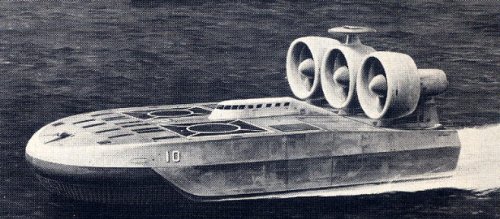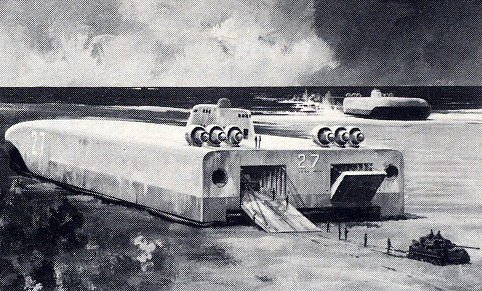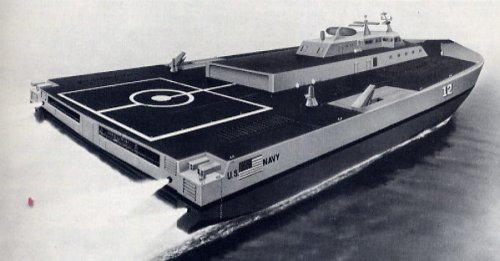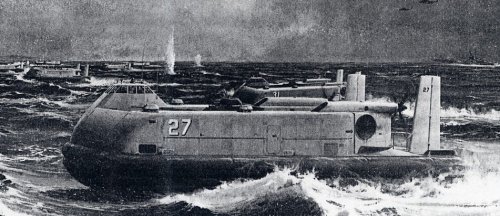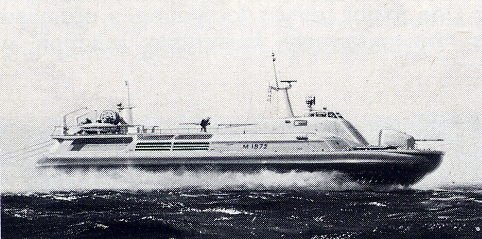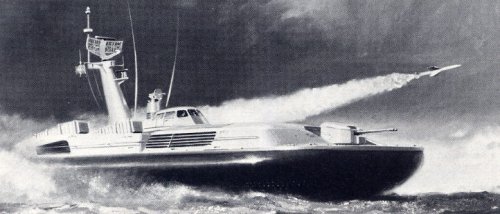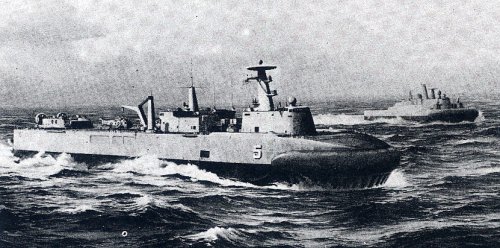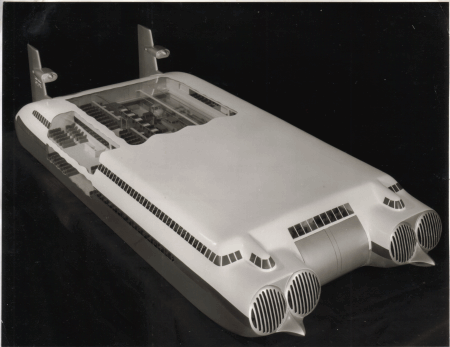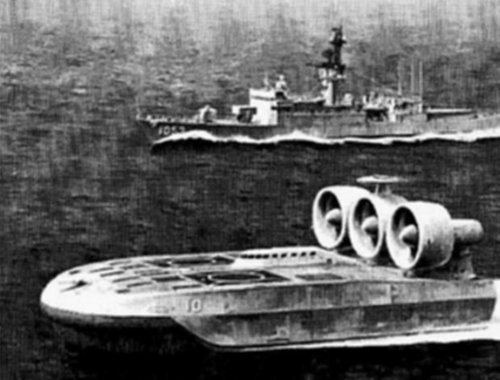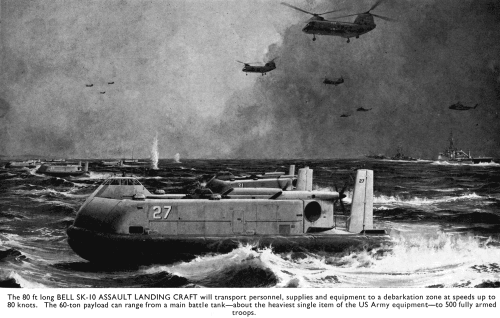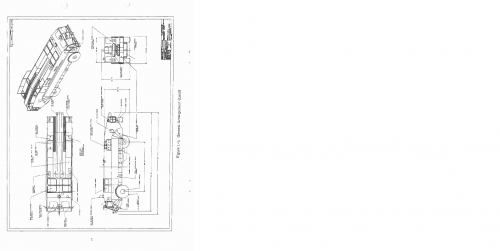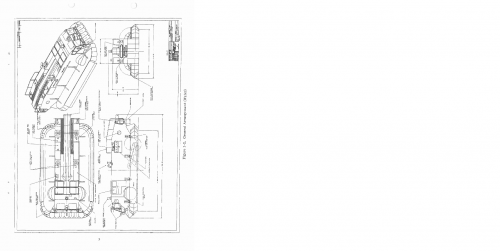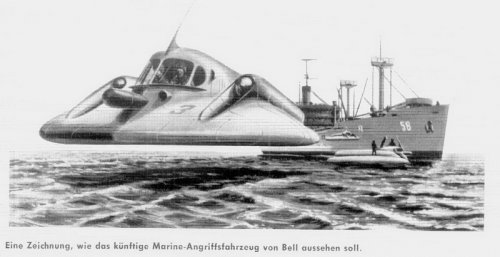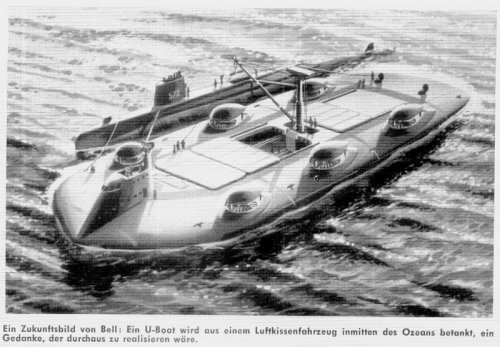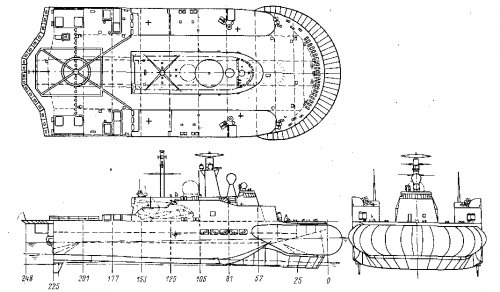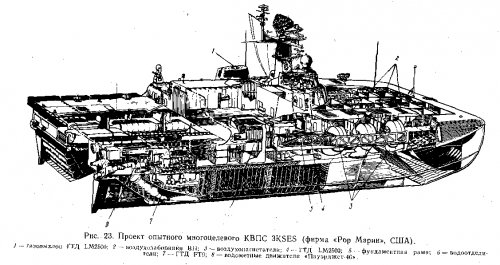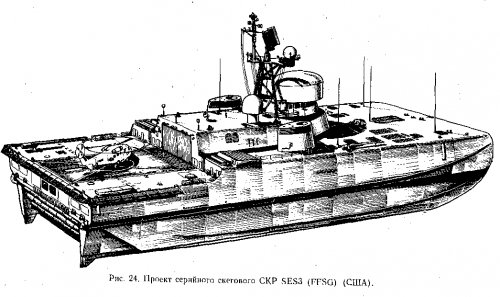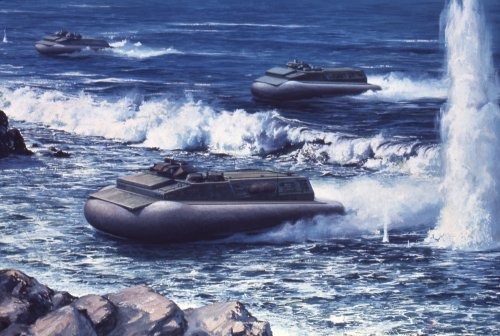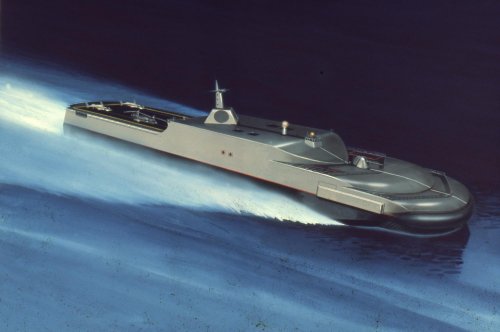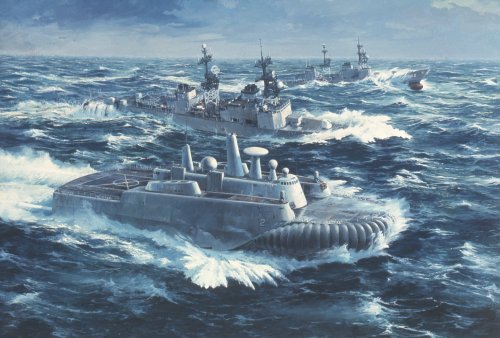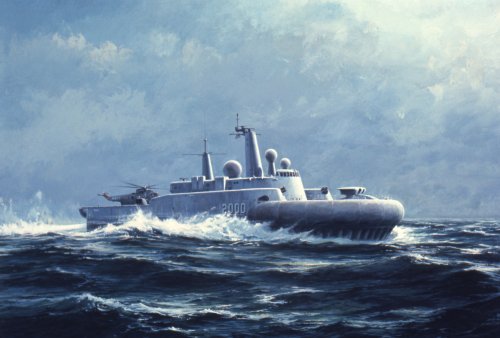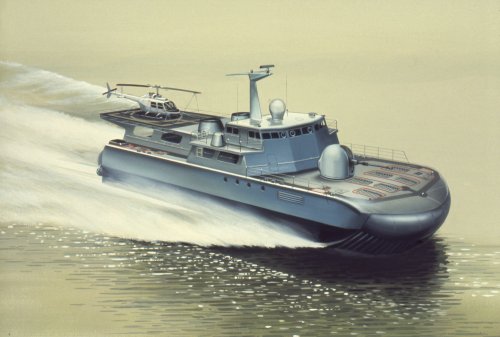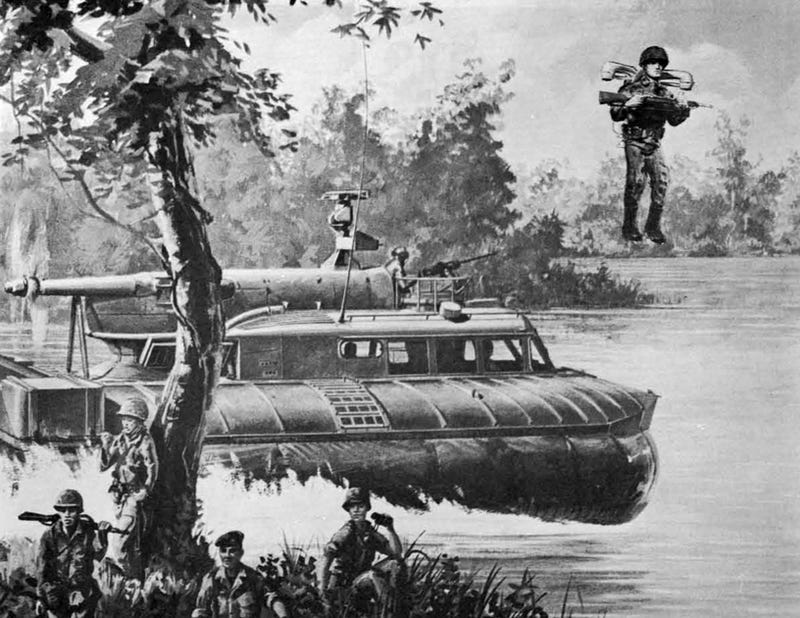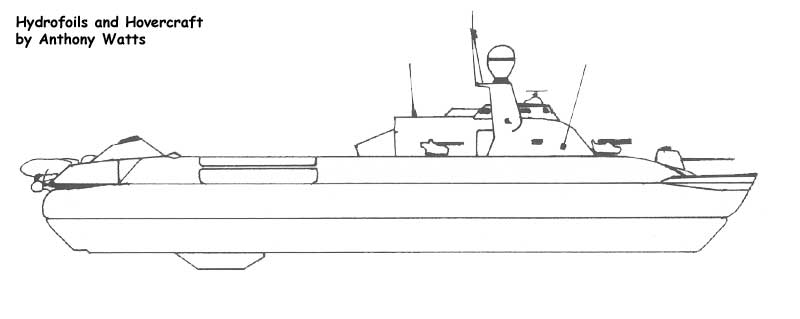Presently the helicopter offers the best means for establishing
and supporting satellite stations. As SEV's become available this
situation will change. A vehicle such as the Voyageur being developed
and built by Bell Aerospace, Canada, appears to offer many advantages
for support of research on the pack ice. Even when such
vehicles become available however, helicoptors should be retained in
the transportation mix. They have great flexibility for getting about
and for doing a variety of jobs, including, as one example, use as
a device for lifting and erecting structures in situations where cranes
are not available. Helicopters also are needed for reconnaissance
support for the SEV. The automatic hover capability for helicopters,
earlier described under STATE OF THE ART, should markedly im -
prove the capability of this aircraft to operate in low visibility.
Satellite stations may be manned or unmanned. If manned,
housing might be provided by pre-equipped modular vans, one or
more small 8' x 8' x 8' huts, or fold-truss structures such as
described under
Shelters in Section II. Heat and power would be
provided by small diesel or propane generators. An airstrip would
be necessary even if heavy equipment for resource exploration is to
be brought in. A flying crane helicopter or an SEV could be used for
this purpose.
Unmanned satellite stations would, of course, be established by
airdrop from long-range aircraft operating from land bases. In the
complex being described here, it is visualized that they wvould be
established by helicopters or SEV's. They may consist of a variety
of devices for the acquisition of data pertaining to the regions above,
in, and under the ice, including the use of unmanned submersibles.
A key element will be a reliable, long-life, economical power
source. Current power sources (batteries, diesel generators, winddriven
generators), while adequate for many purposes, serve to
restrain the full development of unmanned stations. For applications
in which the cost is justified, the technology is in hand to provide isotope
thermoelectric sources in the lower power ranges up to perhaps
several hundred watts and isotope heat engines in the higher power
ranges exceeding 1 kilowatt.
Data collection from the satellite station could be managed from
the base camp and fed to an Arctic Data Management Center at a location
such as Fairbanks. Space satellite communication links could be
employed.
The Voyageur Heavy Haul Hovercraft is composed of prefabricated
modules that can be transported by air to an assembly point.
Here, the modules can be bolted together to form the vehicle. Its
gross weight when assembled is 40 tons, and its payload is 20 tons
under normal conditions. This matches the C-130 capacity. The
forward 40 feet of the 64. 5-foot-long deck is flat and open for use in
hauling cargo. Again, this matches the C-130 capability; thus the
Voyageur is said to be compatible with the C-130.
Various modules can be carried on the cargo deck. Thus a pas-
senger module might be installed, or a workshop, or perhaps a drill.
Used for other purposes than described here, the practicability of
installing modules on the cargo deck would provide the vehicle an
interesting variety of capabilities for use in the Far North.
The Voyageur or similar SEV would be used both to support the
satellite station complex and to serve as a mobile station. A safe
round-trip distance with a 15, 000-pound payload would be on the order
of 200 to 250 miles. Cruise speed would be 30 knots. Range versus
payload is shown in Figure 4.
To summarize, the logistics concept suggested for support of
research activity in the arctic pack ice would use conventional commercial
transportation to northern terminals; C-130 (with air-cushion
landing gear when available) to base camps in the Arctic Ocean;
helicopters and SEV's (when available) for support of manned and unmanned
satellite stations; and SEV's to provide mobile research and
working platforms. It would be a dynamic, flexible system. The
hardware to implement the system without SEV's and air-cushion
landing gear for aircraft is available now, and full implementation of
the system is expected to be possible by 1975.
It is visualized that research and resource exploration will be
proceeding in a multiplicity of areas in the Arctic Basin; it will be
conducted by both the U. S. and the Canadian governments as well as
by commercial interests. The driving force for this activity will be
the oil and gas potential of the Arctic and the military requirements
associated with the Arctic. These considerations have been discussed
in Sections III and IV of this report. To provide logistics support for
this activity most efficiently and economically, a logistics transportation
pool, supported by and available to all interested parties,
should be established.
Arctic Logistics Support Technology (1971 ARPA symposium report)

